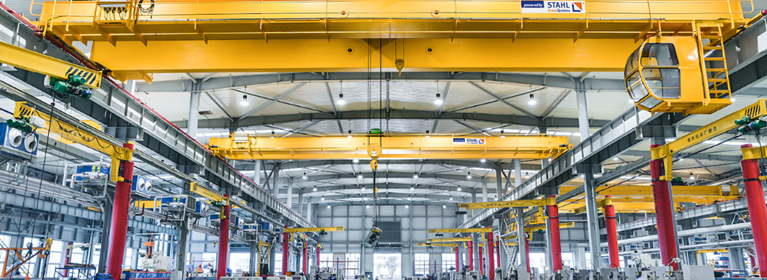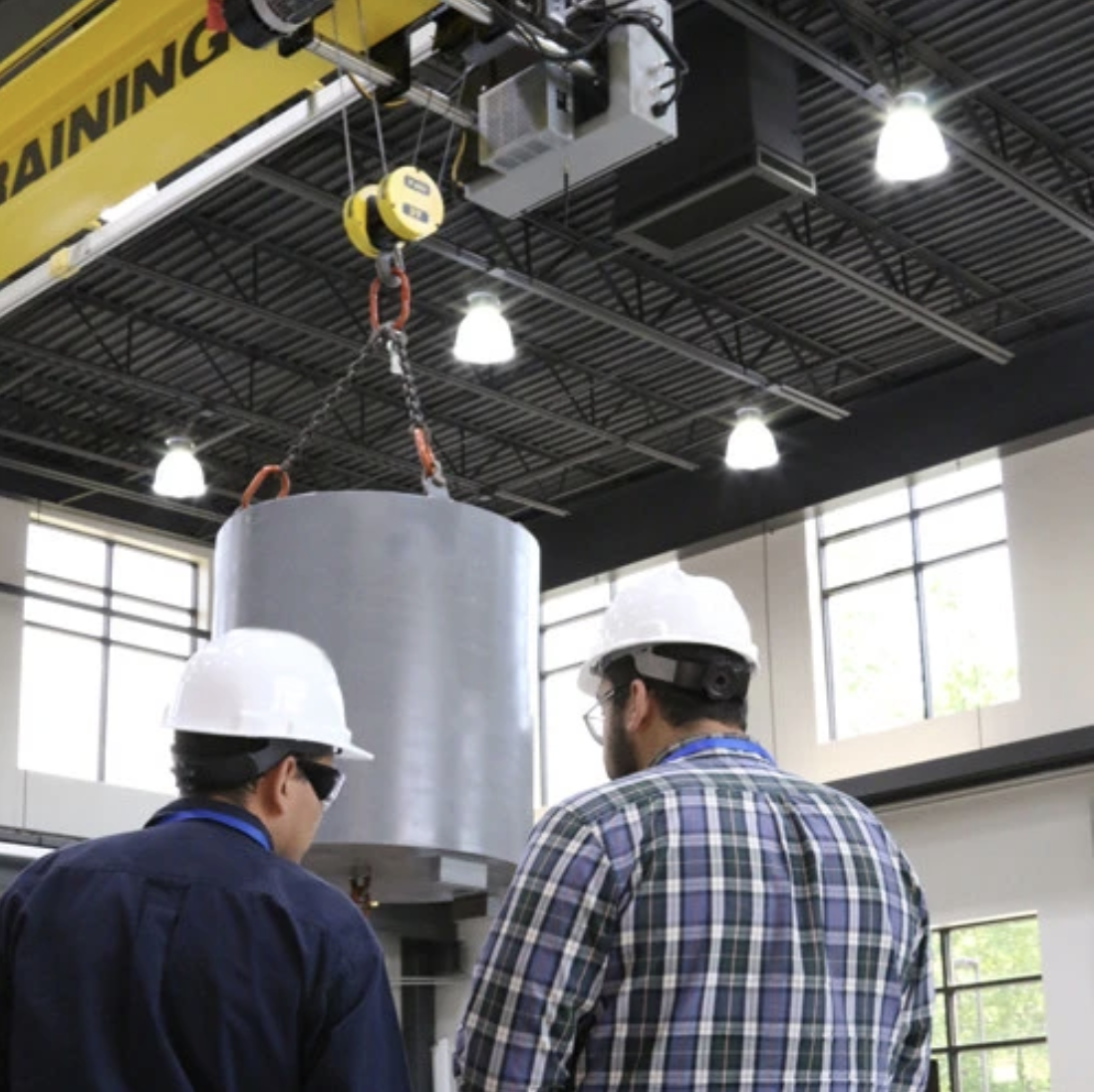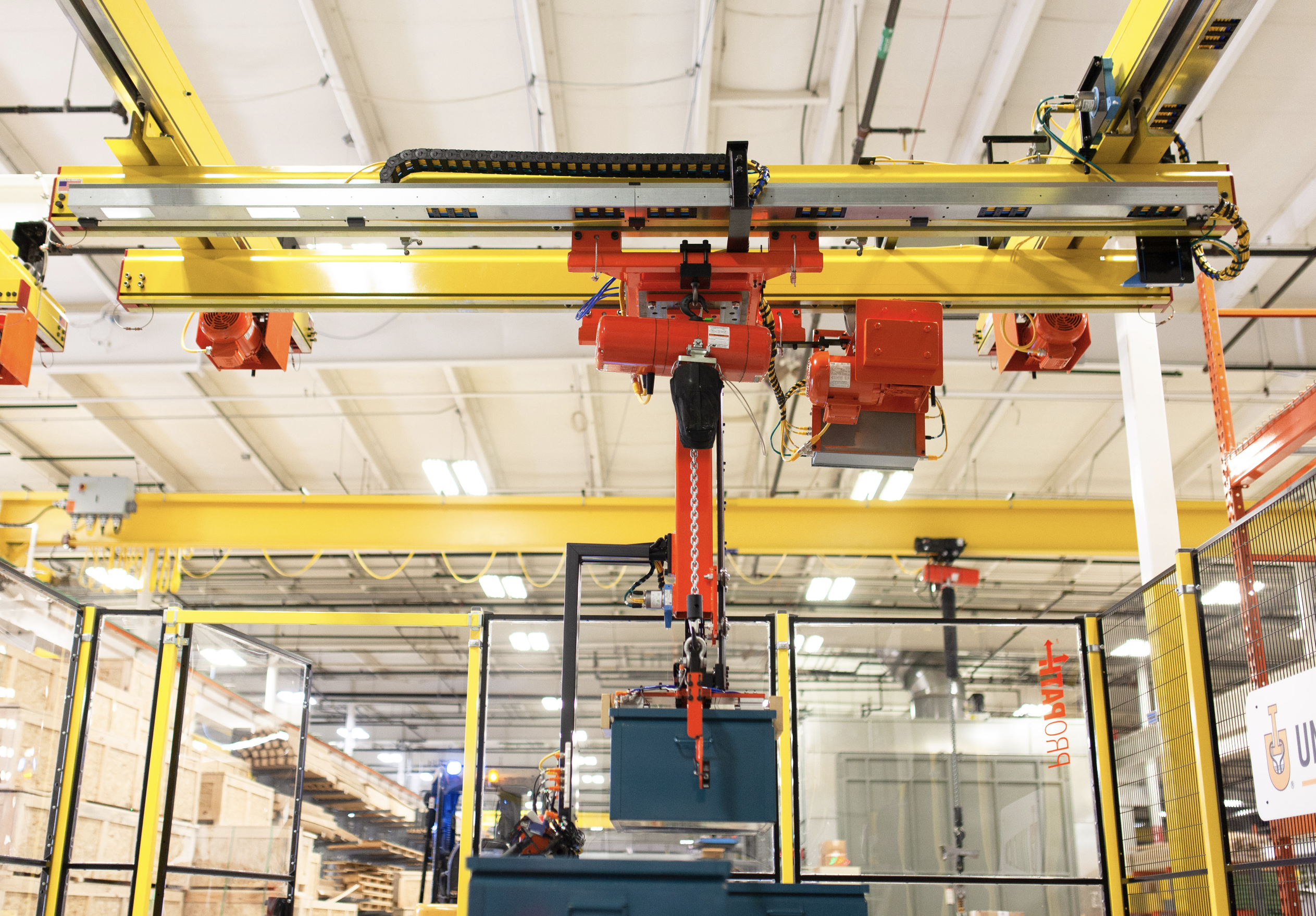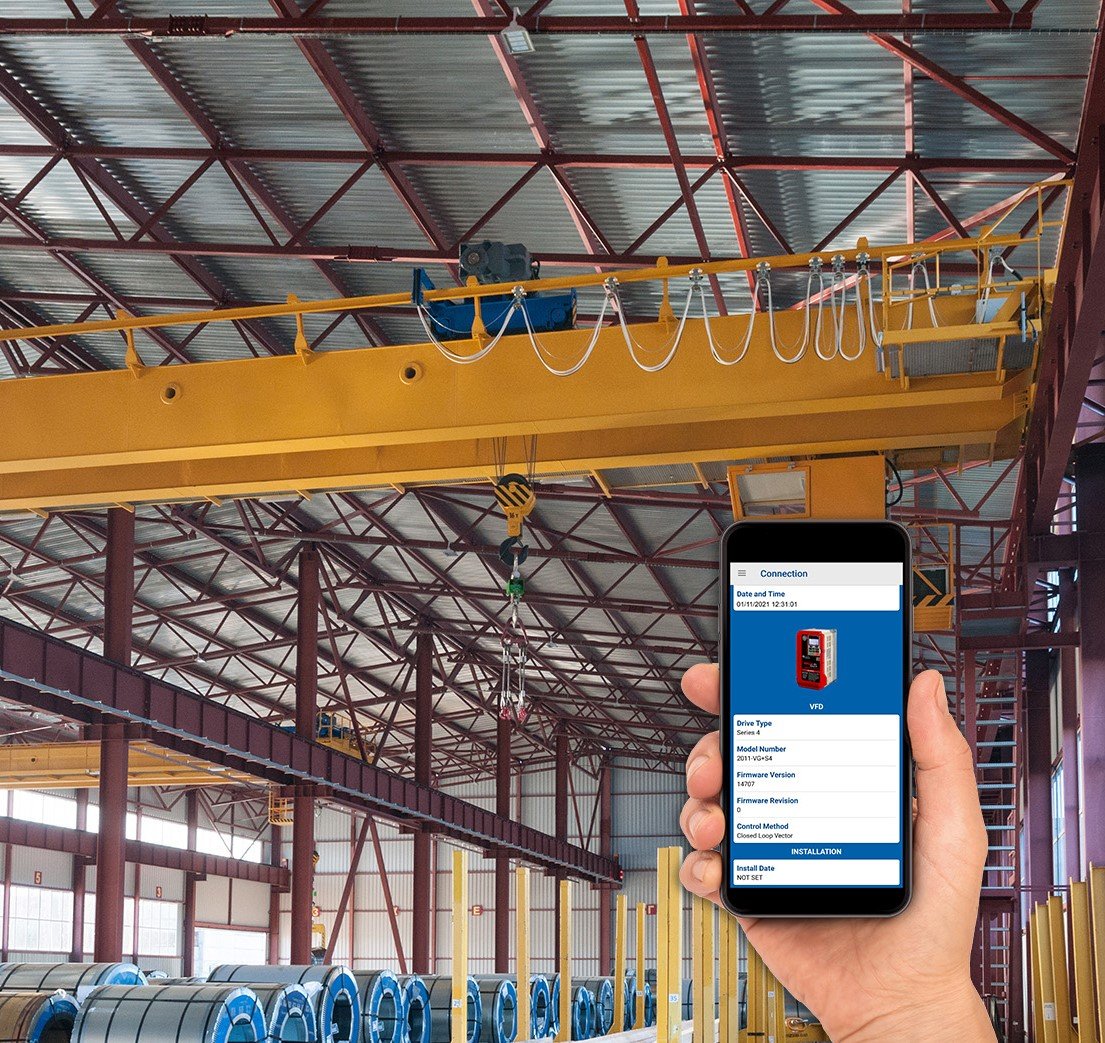
Overhead Crane Maintenance Checklist
By Columbus McKinnon | 16 Mar 2023
 If you own or operate an overhead crane or jib crane, you understand the importance of a regular maintenance program. It is essential for lifting equipment to maintain efficient operation and, more importantly, keep operators and those around the equipment remain safe. An overhead crane inspection sheet can be incorporated at any worksite that uses an overhead crane to handle materials. This ensures the system will continue operating properly before a worker operators the equipment. Since operating cranes can be extremely dangerous, it's important to have a comprehensive preventative maintenance program that includes a daily inspection.
If you own or operate an overhead crane or jib crane, you understand the importance of a regular maintenance program. It is essential for lifting equipment to maintain efficient operation and, more importantly, keep operators and those around the equipment remain safe. An overhead crane inspection sheet can be incorporated at any worksite that uses an overhead crane to handle materials. This ensures the system will continue operating properly before a worker operators the equipment. Since operating cranes can be extremely dangerous, it's important to have a comprehensive preventative maintenance program that includes a daily inspection.
Having an inspection and safety procedure checklist is the first step in implementing a comprehensive, preventative maintenance program. By following a checklist, you will not only prolong the life of your overhead crane but also preserve your warranty and prevent potential worker safety concerns.
According to OSHA 1910.179, a crane operator must conduct a daily safety inspection each day and/or prior to use each shift. To be able to use the equipment safely, operators must first ensure that all required safety equipment is present and in use. In addition, the operator should be trained and authorized to do so. While pre-op checklists for cranes might seem redundant for every shift to complete, many factors can change on a crane depending on the skill and care of the previous person who operated it.
Area Check

This is to ensure that the area around the crane is clear.
- Know the location of the crane disconnect switch.
- Make sure there are no warning signs on or around the pushbutton pendant.
- Check to make sure no one is working near the area.
- Look ahead to verify that the load can travel freely.
- Make sure the area where the load will be moved is free from obstructions and that the area is large enough to accommodate the movement and placement of materials.
- Check to make sure the below-the-hook devices are designed for the crane in use and will safely be able to lift the load.
- Check that the crane's capacity is equal to or less than the load capacity.
Once the area around the crane has been inspected, the preliminary equipment check should take place.
Preliminary Equipment Check
- Inspect the hoist, trolley, bridge, runway, and electric systems for loose, broken, or damaged parts.
- Wire ropes should be reeved and seated correctly in drum grooves.
- Check that the bottom block is not twisted (no two lengths of wire rope should touch).
- Make sure that no open power sources are in contact and that enclosures are secure.
- Make sure no wires are pulled from strain reliefs or bushings.
- Check to ensure the pushbutton pendant controls are not damaged (look for cracked parts, torn labels, or missing labels).
Chain Inspection - Hoist Chain vs. Rigging Chain
When the crane operator has checked the crane area and conducted a preliminary equipment check, he or she can inspect the crane itself for possible malfunctions or safety hazards.
Daily Equipment Check
Powered Systems - Daily Equipment Check
- Ensure that the pushbutton operates smoothly. When released, the button should return to the off position automatically.
- Make sure the crane warning device operates properly when the pushbutton is turned on.
- Make sure the hoist hook rises when the button is pushed upward.
- Ensure the upper limit switch is working properly.
- All other pushbutton controls should operate correctly and move in the right direction.
Hooks - Daily Equipment Check
- Ensure no part of the hook has more than 10 percent wear.
- Make sure the piece is not bent, twisted or cracked.
- Safety latches should be working properly and stay in place.
- If the hook nut is visible, ensure it's tight and securely attached.
- Ensure that the hook rotates freely without grinding.
Bottom Block Assembly - Daily Equipment Check
The bottom block assembly should be checked for:
- Structural damage
- Components with cracks
- Visible capacity markings
- Rotation of the sheaves is free of grinding
- Smooth sheaves
- Unbroken and intact sheave guards
General/Misc. - Daily Equipment Check
- Examine the wire rope and load chain by walking 360 degrees around the hook block.
- Make sure there are no reductions in diameter.
- Make sure there are no broken wires.
- Verify that the wire rope is not kinked, cut, crushed, unstranded, or thermally damaged.
- Inspect the load chain for cracks, gouges, nicks, corrosion, or distortions.
- Contact points should be free of wear.
- Make sure the chain sprockets are operating smoothly.
- Ensure the trolley motor and bridge brakes are on track and functioning properly.
- Make sure the hook does not drift when you release the controls.
- Remove any loose items from the crane that could fall.
- Check for oil leaks.
- In case a fire occurs, make sure an extinguisher is available.
- Make sure the air or hydraulic lines are working properly.
- Make sure all devices below the hook are in good working order.
- Confirm rigging personnel will be able to control the raised load and clear any obstructions throughout the entire lift.
- Is cribbing available if required.
- Check that environmental conditions within the operating specifications of the lift plan and crane. (i.e. wind, rain, snow, or ice)
- If any of the environmental conditions exist, how will they affect the lift?
- If the lift runs into the later hours and daylight is minimal ensure, alternative sources of light readily available.
Maintenance of any overhead crane system requires effective daily safety inspections. You should establish a safety regimen based on the inspection checklist listed above. If you notice any malfunctions, unusual noises, or unusual movements, you should stop using the crane immediately.
FAQs
How often should overhead cranes be inspected?
Some government bodies require you to inspect cranes annually. To increase safety, you should conduct your own inspections throughout the year. Some inspections should be performed every time the crane is used, while others can be performed less frequently. Checks should be performed as follows:
- Frequent Inspections - Daily equipment checks
- Periodic Inspections - These take place bi-monthly, quarterly, or annually.
What is the preventive maintenance checklist for an overhead crane?
A preventive maintenance checklist, or daily maintenance checklist, for an overhead crane is something all crane operators should have in their back pocket to reference as they begin their day to ensure safety and productivity when the overhead crane is in use. OSHA 1910.179(j) classifies daily inspections as frequent inspections and requires a daily inspection checklist that is signed off on. OSHA requires frequent inspections of all "operating mechanisms" (hoists, cranes, their moving parts), hoist chains, hooks, and other items. Many of these items require daily visual inspections and monthly inspections with certification records.
Who should perform daily overhead crane safety and maintenance checks?
Daily overhead crane safety checks should be performed by the crane operator. A fully qualified engineer or trained inspector should perform more detailed inspections, like periodic inspections.
Why should my overhead crane be inspected?
Regularly inspecting machinery can uncover mechanical problems early, reducing the risk of injuries or costly equipment failures. Repair costs may be significant, but proactively addressing repairs can help prevent operation disruptions or suspensions. Overhead crane inspections are also a preventative measure. Incorporating inspections into employee training can help reduce issues caused by improper use and encourage a deeper understanding of the equipment.
OSHA compliance is another reason for crane inspections. Failing to keep your equipment up to code can result in indirect financial penalties and costly downtime.
Is a visual inspection the only way to ensure my crane is in proper working order?
No! Intelli-Connect™ Mobile, an automation solution from Columbus McKinnon, can help enable predictive maintenance and minimize downtime. Intelli-Connect Mobile’s wireless drive monitoring, analytics, and configuration features enable quick and easy programming, maintenance, monitoring, and troubleshooting of overhead cranes and hoists. You can access detailed information from the plant floor using the Intelli-Connect Mobile App. With descriptive and diagnostic information at your fingertips, you can address issues more quickly, plan maintenance, and reduce downtime.
Columbus McKinnon, can help enable predictive maintenance and minimize downtime. Intelli-Connect Mobile’s wireless drive monitoring, analytics, and configuration features enable quick and easy programming, maintenance, monitoring, and troubleshooting of overhead cranes and hoists. You can access detailed information from the plant floor using the Intelli-Connect Mobile App. With descriptive and diagnostic information at your fingertips, you can address issues more quickly, plan maintenance, and reduce downtime.
Learn more about Intelli-Connect™ Mobile
With our specialized expertise and experience, we can provide customized crane solutions that meet all your needs. Contact us today for information on utilizing overhead crane safety systems in your facility to keep your workers safe and improve productivity and uptime.
Related Articles
Perry Bishop, Technical Instructor for Columbus McKinnon, responds to a customer question about chain Inspection gauges for hoist chain vs. rigging chain.
Learn under what circumstances inspections must be documented for Overhead Top Running Double Girder Bridge Cranes in regular service.
Shackle Inspection Checklist: Six Items to Inspect Before Use
Know What to Look For and When to Remove a Shackle from Service
Per ASME B30.26, visual shackle inspection should occur before every use. We share six conditions when a shackle should be discarded and replaced.



 Central America-Andean-Caribbean - EN
Central America-Andean-Caribbean - EN






